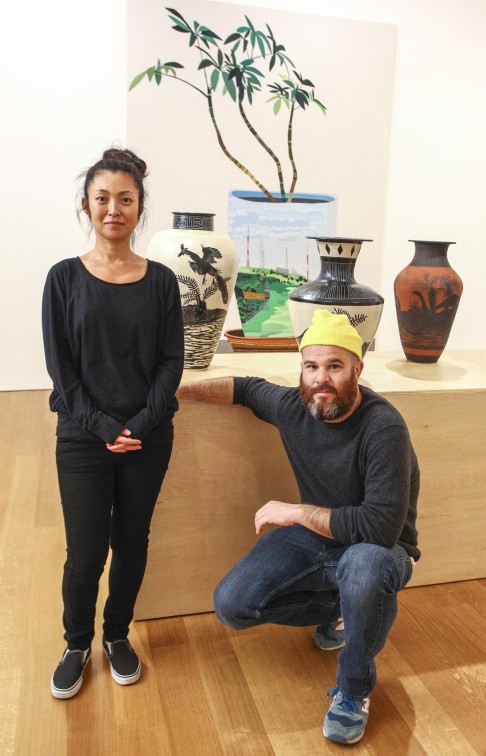Artist Shio Kusaka and Jonas Wood share similar creative interests
It may be more than coincidence that painter Jonas Wood and potter Shio Kusaka presented their most significant exhibitions in the same year. Married with two children, Momo and Kiki, the couple have been sharing a studio since 2002.

BLACKWELDER
Gagosian Gallery
It may be more than coincidence that painter Jonas Wood and potter Shio Kusaka presented their most significant exhibitions in the same year. Married with two children, Momo and Kiki, the couple have been sharing a studio since 2002.
Wood showed his paintings of plants, sports cards and portraits in a solo show at Los Angeles' David Kordansky Gallery, and Kusaka's expressive ceramic pots, bowls and vases were exhibited in the 2014 Whitney Biennial.
It seems fitting that the name of their studio on Blackwelder Street, Los Angeles also lends its name to their joint exhibition at Gagosian Gallery.